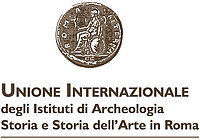Mysterious mud: a transversal approach to interpreting unsolved earthen remains

Rome, Sapienza Università di Roma
The 08/30/2024
Session dans le cadre du congrès de l’European Association of Archaeologists
29 août 2024, Rome
Sapienza Università di Roma
Organisée par : Pierre Péfau (EFR), Alejandra Sánchez Polo (Universidad de Valladolid), Marta Mateu (Institut Català d’Arqueologia Clàssica), Lucía Ruano Posada (Universidad Complutense de Madrid) et María Pastor Quiles (Universidad de Alicante)
The fragility of the earthen remains found in the archaeological record entails some difficulties in identifying building and production processes, as well as related social practices. Our aim with this practical session is to analyze evidence collaboratively by sharing case studies from archaeological and ethnographic contexts, including experimental studies. By examining these materials, we want to discuss and share proposals and solutions that not only allow us to reflect on our interpretations of past societies, but also consider future and sustainability perspectives.
The mud remains preserved in museums or described in reports or publications are often true unsolved cases as they are insufficiently described. When confronted with these artefacts, some questions arise, such as whether these remains were part of the rooftops, other building sections, or some kind of furniture, who made them, and so on. With these concerns in mind, we are searching for case studies that address enigmatic fragments, undetermined earthen elements, to try to propose a function. Additionally, attending the different life stages of the buildings, we would like to discuss examples of repairing, rebuilding and abandonment processes.
How will we work at this special session? It aims to be a practical workshop where participants share archaeological materials and discuss them together. At this point, we refer to the identification of earthen materials (from a macroscopic view to a microscopic approach, including XRD, XRF, FTIR, petrology, etc.), paying attention to imprints, decoration and composition to understand the different construction techniques (wattle and daub, cob, mud brick, plasters, etc.), as well as earthen furniture (ovens, grills, benches, shelves, buckets, ornaments, etc.). We welcome papers from any era, as long as the material presented is raw earth. We aspire to collectively solve our cases, strengthening individual research and shedding light on this fundamental part of humanity's material past.
Axe 3 - Population, ressources, techniques
Section : Antiquité



